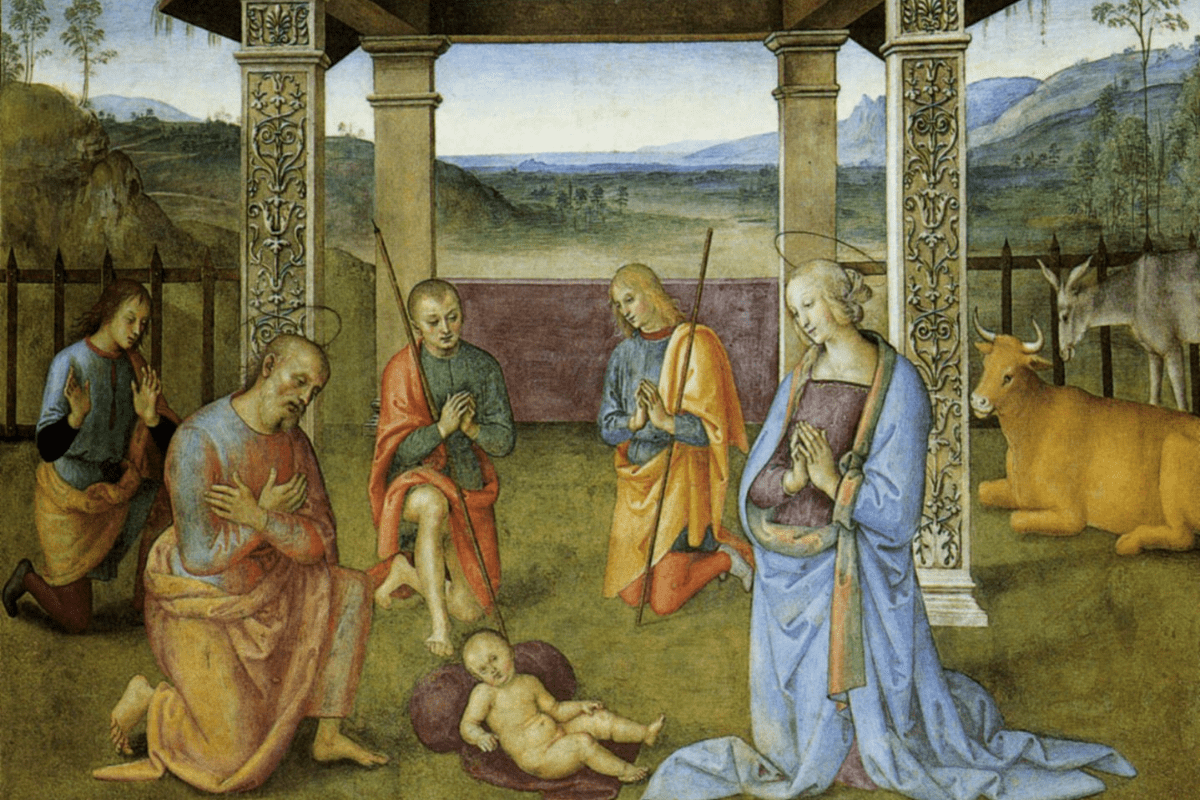This reflection is taken from our book Prepare the Way of the Lord, which contains reflections on the Scripture of Advent, and line-by-line meditations on the Hail Mary. Order now.
Readings: Ba 5:1-9; Ps 126:1-2, 2-3, 4-5, 6; Ph 1:4-6, 8-11; Lk 3:1-6
“There are three distinct comings of the Lord of which I know, his coming to people, his coming into people, and his coming against people.” (St Bernard of Clairvaux)
St Bernard of Clairvaux, the great twelfth-century Doctor of the Church, added that Christ’s “coming to people and his coming against people are too well known to need elucidation.” Since, however, today’s Gospel reading mentions both groups – those Christ comes to and those he comes against – a bit of elucidation is in order.
St Luke took pains to situate the fact of the Incarnation within human history. He did so by providing the names of several different rulers, beginning with Caesar Augustus (Lk 2:1), who reigned from 27 BC to AD 14, and who was ruler of the Roman Empire when Jesus was born.
In today’s Gospel, the evangelist situates John the Baptist’s bold announcement of Christ’s coming in the fifteenth year of Tiberius Caesar. Tiberius, the stepson of Augustus, reigned from AD 14 to AD 37. Pontius Pilate was appointed procurator of Judaea by Tiberius in AD 26, and served in that post for ten years. Those men and the others mentioned by St Luke – Herod, Philip, Lysanias, and the high priests Annas and Caiaphas – ruled the known world while the ruler of all creation walked the dusty roads of Palestine and announced that the Kingdom of God was at hand. The Roman rulers were ruthless and often violent men who established rule and kept order through military might and political power. They did, in fact, establish and keep a sort of peace – the Pax Romana – which lasted about two centuries (27 BC to c. AD 180).
Yet that peace was both uneasy and fragile; it had been won by the sword and often relied on fear, intimidation, and persecution. St Luke’s mention of these rulers was, on one hand, meant to support the historical nature of his “orderly account”, which was to be “a narrative of the things that have been accomplished among us” (see Lk 1: 1-4). But, on the other hand, it was also meant to establish a deliberate comparison and contrast between the rulers of this world and the ruler of nations, between the kings of earthly realms and the King of kings.
The Roman rulers used force and relied upon fear, but the Incarnate Word came with humility and love. Emperors were announced and escorted by armed soldiers, but the birth of the Christ child was announced by heavenly hosts offering songs of praise, not swords or spears. “What the angel proposes to the shepherds is another kyrios [Lord],” notes Bishop Robert Barron in The Priority of Christ, “the Messiah Jesus, whose rule will constitute a true justice because it is conditioned not by fear but by love and forgiveness”. The Lord came against injustice, fear, violence and death, and would himself experience each of those dreadful realities for the sake of all men. Such would be “the salvation of God” spoken of by John the Baptist, who quoted from Isaiah’s beautiful and moving hymn-like reflection on the glory and goodness of God (Is 40).
John, like Isaiah, was pointing towards the comfort, peace and joy that only God can give. Yet the final rest and joy is not yet fully known. We live, St Bernard explained, during the time of the “third coming” of Christ, between the Incarnation and the final coming, or advent, when all men will finally see the pierced but glorious Lord. “The intermediate coming is a hidden one; in it only the elect see the Lord within their own selves, and they are saved.” Christ comes to us in spirit and in power; he most especially comes to us under the appearance of bread and wine. “Because this coming lies between the other two,” wrote St Bernard, “it is like a road on which we travel from the first coming to the last.”
That winding road is the way of the Lord, the path of Advent.
Prayerfully discover the meaning of Christmas with Prepare the Way of the Lord
 Prayerfully discover the meaning of Christmas with this collection of meditations on the Scriptures and prayers of the Advent season. Reflecting upon the Sunday Gospels, Carl E Olson highlights their depth and helps us to apply the Scriptures to our own lives.
Prayerfully discover the meaning of Christmas with this collection of meditations on the Scriptures and prayers of the Advent season. Reflecting upon the Sunday Gospels, Carl E Olson highlights their depth and helps us to apply the Scriptures to our own lives.
Olson continues this Advent meditation by offering a line-by-line contemplation on the Hail Mary, illuminating the significance of each word so as to deepen our experience of this integral prayer. By praying the Hail Mary mindfully, we discover how to walk through Advent with Mary, ready to welcome her Son at Christmas.
